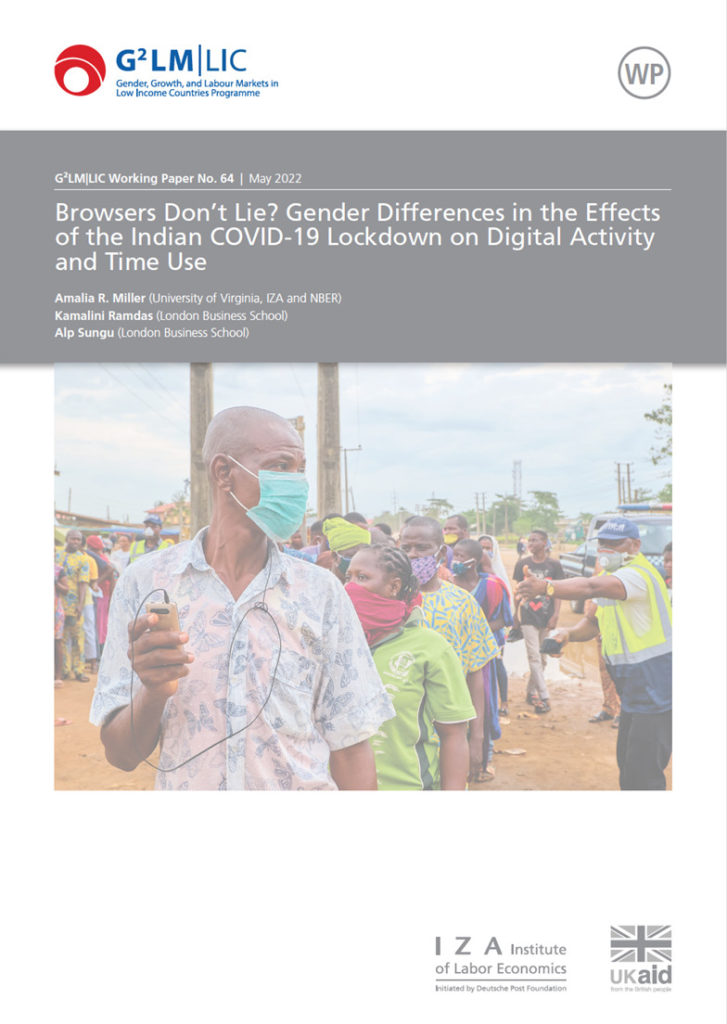
When intending to study the time-use choices of working-age individuals and the corresponding gender differences, it is necessary to have information on demographic characteristics of targeted groups as age, children, education etc. More importantly however, researchers need to be able to identify comparable groups through which to assess gender differentials. Gendered effects of COVID-19 are therefore increasingly and thoroughly being studied in High-Income countries. Due to a recurrent problem nevertheless, namely the lack of relevant and exploitable data, this is less so the case in Developing ones.
In this new Working Paper, researchers set to address this research endeavour in India while overcoming the lack of relevant data by turning to modern methods and the recollection of browser history information of participants of an online survey. While the group investigated evidently corresponds to a special selection of the Indian population, authors of the paper are able to extrapolate results and come to relevant conclusions. Among other relevant results, they find that browser time-use increased considerably for both genders, but that the data suggests that childcare and household chores were considerably more delegated to women regardless of the labor status of themselves and their partners. Read the detailed Working Paper here.